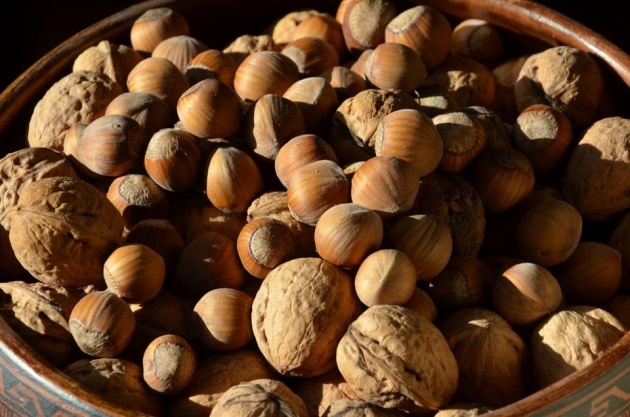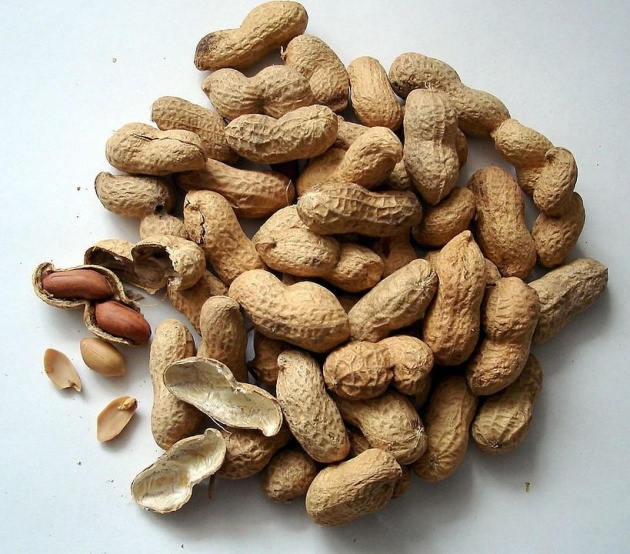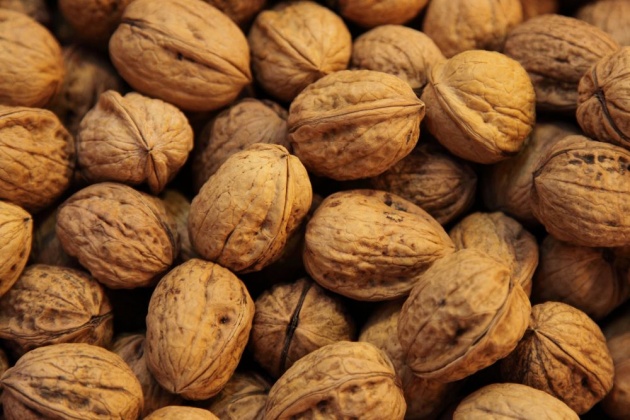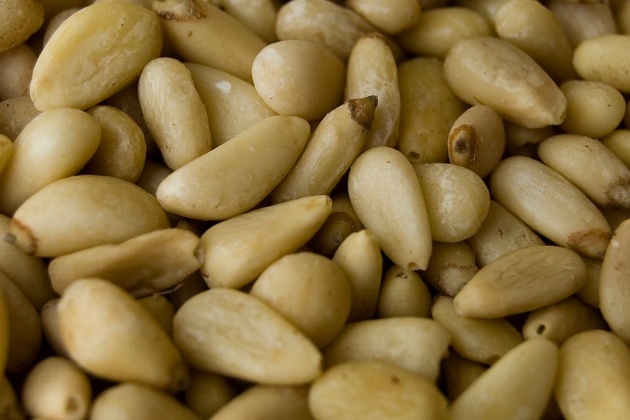 image source: www.pixabay.com
image source: www.pixabay.com
Hello, guys!
I haven't written anything on the food topic recently, that's why I will try to fix that in this blog. Hopefully, I will manage to give some useful information about eating nuts. So, let's get started.
Nuts can be defined differently depending on whether we talk about the science botany or their general most known definition. Well, the word itself may refer to many other terms, as I can see it has more than 16 distinct meanings in the dictionaries. Here is the one I find most accurate.
NUT
An indehiscent fruit having a single seed enclosed in a hard shell, such as an acorn or hazelnut.
Benefits of Nuts
All nuts have some similarities in regards to nutrition facts, uses, and benefits. As natural products, representing the seeds of plants, they contain all the needed nutrients for the survival of those species. So consuming them has multiple benefits. I'll list some of them below:
– Nuts contain significant amounts of fat and calories compared to other types of food. They provide a lot of energy and can be used in diets both for losing or gaining weight. If consumed on a regular basis they can give an energy boost and an overall feeling of strength.
– Nuts help for improving the function of the heart, as well as prevention of future diseases. They are known to have a positive influence on the overall health condition of the organism.
– They enhance memory and concentration. It is proven that especially peanuts and walnuts are rich in the bioflavonoid resveratrol, which increases the blood stream sent to the brain, thus improving its function.
– Nuts can prevent cancer or lower the risk of developing such diseases, due to the vitamins and minerals they contain. They can also have an active and healing effect in case a disease has already been obtained.
video source: www.youtube.com
I also want to mention six kinds of nuts specifically, and these are peanuts, walnuts, macadamia, pistachios, hazelnuts, and pine nuts.
Peanuts
I'll start with these small nuts because they are probably the least beneficial to our health. I think it is still controversial whether peanuts are healthy or not. Many nutritionists don't recommend them as a healthy food, but I can't say I'm convinced that's true. Indeed, peanuts contain nutrients which might harm, but this is only for some people, not for all. In general, they are plants, a natural product, and as such, they have their value. They contain sufficient doses of calcium and vitamin D, which keep the bones healthy.
 image source: www.pixabay.com
image source: www.pixabay.com
Now, I'm not trying to underestimate peanuts; they can cause severe conditions due to the peanut allergy, which people might develop. Peanut allergy is the intolerance to peanuts, any peanut products or even the smell of peanuts. It happens when the consumption of peanut proteins causes the body to produce certain substances and thus that leads to swelling, difficulties in breathing, stomach issues, etc. However, for regular people with no intolerance peanuts are just fine.
 image source: www.google.com
image source: www.google.com
Walnuts

image source: www.google.com
These nuts are extremely healthy; they have multiple applications and uses in regards to ways of consuming and benefits. Some of the many uses of the walnuts are: they slow down aging, strengthen the immune system, help for better concentration and reduce stress. They have around 650 calories per 100 g package, but due to the combination of nutrients, walnuts are known to help in losing weight. The reason for this is that they speed up metabolism, i.e. improve the speed of processing and absorbing food by the digestive system. They can be consumed as a part of many sweets, desserts, and similar. Besides the nuts, the walnut trees themselves provide an excellent shadow during the heats in summer. This is particularly useful for prevention of overheating in the hottest hours of the day. And one last use of walnuts is for dyeing hair; the green cover around the shell contains pigments, used for obtaining dark colors.
 image source: www.google.com
image source: www.google.com
Macadamia
 image source: www.google.com
image source: www.google.com
Ok, macadamia is not a nut, but a seed. However, I still want to take my chances and add it to my blog, as their look is quite similar to the nuts. Macadamia is not very popular in my country, but I'm not sure what the exact reason is. Most probably the market is not big, and they don't import it that much. Or maybe, since the origin of these seeds is Australian, it is too far or too expensive to import them. Macadamia is soft and sweet yellowish seed, with a round shape. It is a plant widely used in cosmetics for its multiple nourishing and healing effects. If used as food, it improves the work of the heart and contains many of the needed daily doses of calcium, iron, vitamins and proteins. It has the highest number of calories compared to other nuts - 100 g of the product have over 700 calories. Just as a comparison, the daily needs of an average person are 1800 - 2000 calories, of course, depending on activity during the day. The first time I tried macadamia, I was actually abroad, and since then that's one of my favorite foods.
video source: www.youtube.com
Pistachios
These nuts are rich in iron, potassium, vitamin E, and antioxidants, which makes them perfect for a snack or prevention of various diseases. Pistachios are the nuts with the least calories and combined with their health benefits and taste, they are appropriate for dieting. The most common type of this food I've seen offered in shops is roasted and salted. They are widely used in the manufacturing of cosmetic products for improving the overall condition of the skin. Pistachios are also used by many chefs in restaurants for preparing luxury meals, as an addition to meat, or in sweets, such as chocolates or cakes.

image source: www.google.com
Hazelnuts
 image source: www.pixabay.com
image source: www.pixabay.com
Hazelnuts grow on a tree; their shells are relatively thin and easy to be cracked. They are my least favorite because their taste is kind of strange to me. The shape of the nuts is very similar to that of macadamia, but both are completely different. Hazelnuts are rich in minerals, fibers, and magnesium. They are available on the market either with the shells or without them, roasted or raw. The most common combination I've seen is hazelnuts with chocolate. Their benefits include recovery after severe illnesses, increasing energy levels and vitality, prevention of heart diseases and cancer.
 image source: www.google.com
image source: www.google.com
Pine Nuts
They are the seeds of the pine tree. Even if they are called nuts, they are actually just seeds. These are relatively new for the Bulgarian market, and most people I know haven't heard or haven't tried them before. Pine nuts contain significant amounts of amino acids thus improve the work of the digestive system. The best way to consume them is raw, as a thermal processing can ruin many of their useful nutrients and their taste. Besides, they shouldn't be considered a meal, but rather an addition to meals or a snack. They have around 670 calories per 100 g, which makes them an energy-boosting food. In rare cases, pine nuts can cause an allergy due to some of their nutrients, but their high amount of minerals and vitamins makes them valuable for most people.
 image source: www.google.com
image source: www.google.com
The best way to consume nuts is without any thermal processing. Raw nuts have all their nutrients and vitamins preserved, as opposed to roasted or fried, which can contain additions and other unhealthy substances. Of course, raw nuts don't have the same taste, but their health benefits cannot be denied. And the market offers tempting varieties, such as flavored nuts, spicy nuts, roasted, fried, etc. The amount of fat contributes to the possibility of producing oils from the nuts, which then can be used in cooking or cosmetics.
A common myth about nuts is that the big percentage of fat they contain can lead to gaining weight. It's just the opposite - food with a lot of fat is great for diets as it provides the necessary daily portions of fat. Limiting these amounts could actually harm more, rather than have a positive effect.
Thanks for reading!
- NinaB



